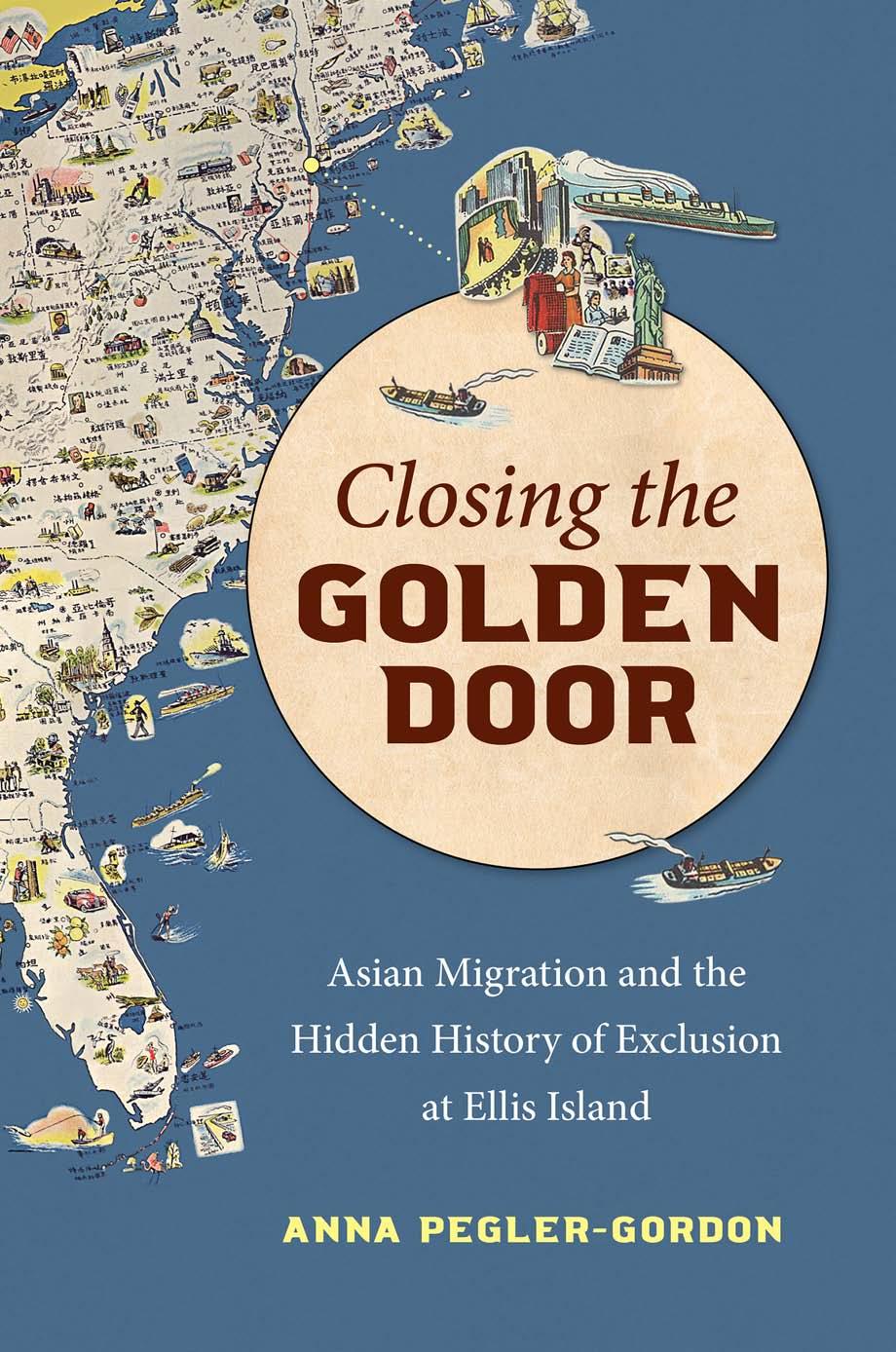Closing the Golden Door: Asian Migration and the Hidden History of Exclusion at Ellis Island by Anna Pegler-Gordon

Author:Anna Pegler-Gordon [Pegler-Gordon, Anna]
Language: eng
Format: epub, pdf
ISBN: 9781469665726
Google: wbVhzgEACAAJ
Publisher: University of North Carolina Press
Published: 2021-09-15T20:31:19+00:00
Changing Alliances during the Depression and World War II
During the 1930s, sailors often struggled to find work. As a global industry, shipping was deeply affected by the global economic crisis. Limited employment opportunities âon land as well as at seaâ meant that desertions were reduced.166 Some unions such as the ISU expanded their campaigns against Asian sailors, describing Chinese sailors as âcooliesâ to suggest that they were not free workers and that their low wages undercut white sailors.167 Other newly established unions such as the NMU, founded in 1935 under the auspices of the Congress of Industrial Organizations, allied with the CSU to organize all workers in a given industry regardless of their rank or race.168
Depression-era concerns about labor competition led to new restrictions on Asian sailors, as well as new alliances to resist such restrictions. The 1936 Merchant Marine Act introduced a requirement that 90 percent of crew members on U.S. merchant ships hold U.S. citizenship. As a result, even though it is not clear that these quotas were met, as many as 4,000 Filipino merchant mariners were discharged from their positions in 1937.169 According to historian Peter Kwong, âChinese workers were systematically laid off by the shipping companiesâfired with no warning, dropped off at any convenient port, and left to make their way home.â170 Many of these discharged sailors settled, some temporarily and others longer term, in the Navy Yard area of Brooklyn and in lower Manhattan.
In the same years, 3,000 Chinese seamen joined the NMUâs 1936â37 seamenâs strike for better working conditions, an equal wage scale, and equal rights to shore leave for Chinese seamen. Although the NMUâs demands for working conditions were met, the labor action did not end the discriminatory denial of shore leave. One year later, the CSU led a strike to protest Dollar Linesâ layoffs as a result of the Merchant Marine Act. Gaining the support of the NMU, the strike was successfully resolved with the company agreeing to pay six monthsâ compensation to laid-off workers.171 These successes were part of a gradual shift as more Americans started to see Chinese as potential allies.
Wartime conditions led to new restrictions on sailors, but also accelerated changing understandings of Chinese nationals, including Chinese seamen. In 1942, immigration officials noted that the âcontrol of alien seamen has continued to be one of the Serviceâs most difficult problems.â172 However, the control of Asian alien seamen was no longer the Immigration Serviceâs primary problem. Officials were now focused on enemy alien seamen, particularly Germans and Italians. As early as 1939, two years before the United States entered the war, German and Italian seamen became stranded in New York because of war in Europe. These âdistressed seamenâ were the first individuals to be detained at Immigration and Naturalization Service (INS) internment camps that were later used to house Japanese and other enemy aliens. At the height of the internment program, the INS held a total of 1,285 Italian seamen as well as German and other enemy seamen.173
As attitudes against Americaâs enemies hardened, allies were viewed more favorably.
Download
Closing the Golden Door: Asian Migration and the Hidden History of Exclusion at Ellis Island by Anna Pegler-Gordon.pdf
This site does not store any files on its server. We only index and link to content provided by other sites. Please contact the content providers to delete copyright contents if any and email us, we'll remove relevant links or contents immediately.
Cecilia; Or, Memoirs of an Heiress — Volume 1 by Fanny Burney(32442)
Cecilia; Or, Memoirs of an Heiress — Volume 2 by Fanny Burney(31875)
Cecilia; Or, Memoirs of an Heiress — Volume 3 by Fanny Burney(31858)
The Great Music City by Andrea Baker(31548)
We're Going to Need More Wine by Gabrielle Union(18974)
All the Missing Girls by Megan Miranda(15600)
Pimp by Iceberg Slim(14401)
Bombshells: Glamour Girls of a Lifetime by Sullivan Steve(13981)
Talking to Strangers by Malcolm Gladwell(13235)
Norse Mythology by Gaiman Neil(13219)
Fifty Shades Freed by E L James(13164)
For the Love of Europe by Rick Steves(13136)
Mindhunter: Inside the FBI's Elite Serial Crime Unit by John E. Douglas & Mark Olshaker(9214)
Crazy Rich Asians by Kevin Kwan(9174)
The Lost Art of Listening by Michael P. Nichols(7412)
Enlightenment Now: The Case for Reason, Science, Humanism, and Progress by Steven Pinker(7243)
The Four Agreements by Don Miguel Ruiz(6641)
Bad Blood by John Carreyrou(6559)
Weapons of Math Destruction by Cathy O'Neil(6152)
